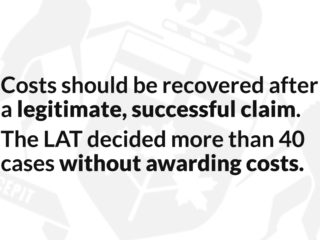Released April 6, 2016 | Full Decision [CanLII]
At the trial of this action, the jury questions agreed upon by counsel and accepted by the trial judge did not oblige the jury to structure its award of damages benefit by benefit as required by s. 267.8 of the Insurance Act. Instead, they offered combined damages for past care, med/rehab and housekeeping, and future care, med/rehab and housekeeping.
Under s. 267.8, pecuniary damages “shall be reduced” by payments from collateral sources including accident benefits under the SABS. The onus is on the defendant to show whether and how such deductions should be made. Following the “apples to apples” concept espoused in Gilbert v. South, 2015 ONCA 712, and elsewhere, an award can only be reduced by a corresponding statutory accident benefit.
In this case, such an approach was rendered impossible by the questions as posed to the jury. The trial judge was wary of the possibility for double recovery, and recognized that the Plaintiff/Appellant had received accident benefits in excess of the total damages awarded at trial. As a result, she determined that the Plaintiff had already been fully compensated for past and future losses and reduced the award to zero.
The sole issue on appeal was whether the trial judge erred in reducing the award in the absence of clear evidence about the quantum of each collateral benefit.
The Appellant argued that the Defendant/Respondent had failed to discharge its onus of proof, and that as a result, the trial judge had erred in reducing the award. Having agreed to the jury questions, the Respondent could not now receive the benefit of s. 267.8, when amounts could not be determined on a benefit by benefit basis.
The Respondent claimed that the Appellant had the opportunity to address the lack of clarity in the questions prior to putting the questions to the jury, and had been content to ask for combined awards. As a result, he should not be allowed after the fact to itemize the various heads of damages in order to frustrate the application of s. 267.8.
Justice Lauwers reviewed the broad principles governing the interplay between accident benefits and tort recovery, and specifically emphasized that hybrid no-fault system was designed to prevent double recovery. To this end, counsel must ensure that any accident benefits settlement allocates the funds according to the applicable benefits and that the jury questions in the lawsuit are structured so that the trial judge can make the appropriate reductions on a benefit by benefit basis. He noted that the trial judge has the authority to reject inadequate jury questions and must approve the final version.
His Honour found that the trial judge committed no error in proceeding as she did. She was reasonably assured that the appellant had been fully compensated, despite the lack of clarity. In reducing the award to zero, she had given effect to one policy objective of the statutory scheme- full compensation, and had respected another- no over-compensation.
The appeal was dismissed with $7,500 in costs to the Respondent.












